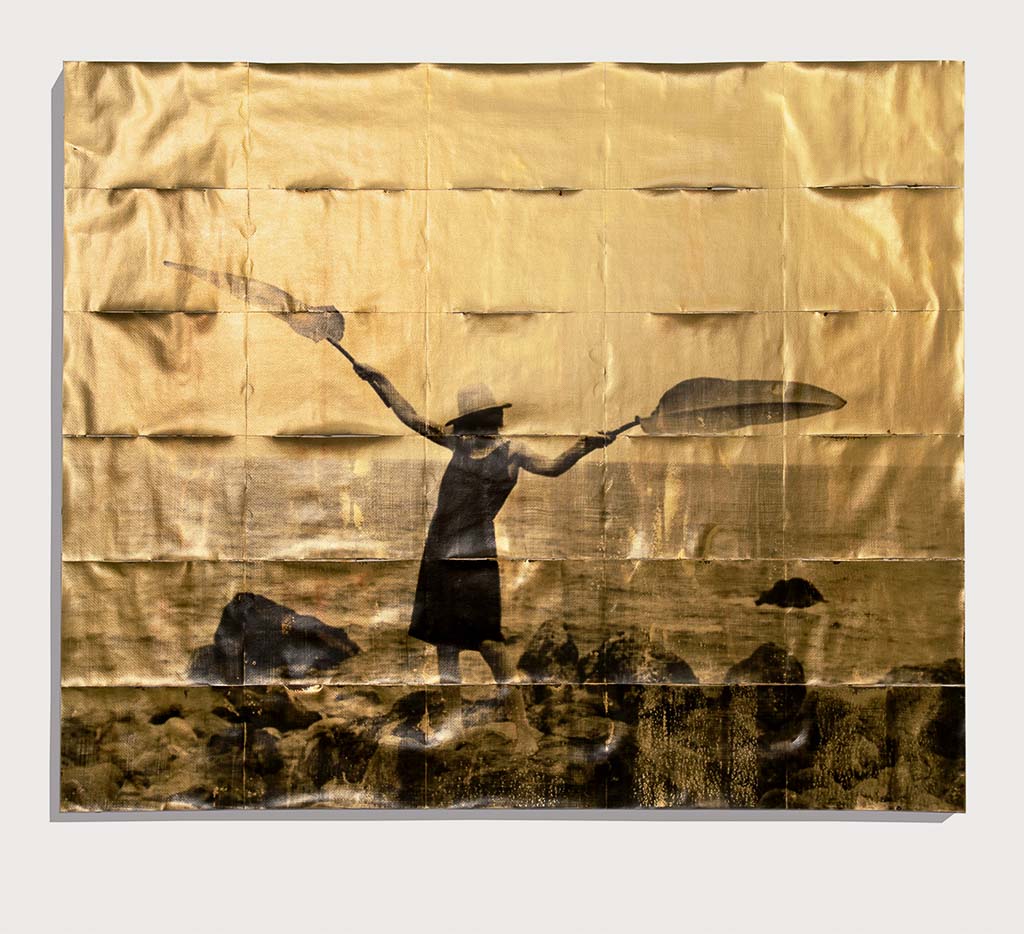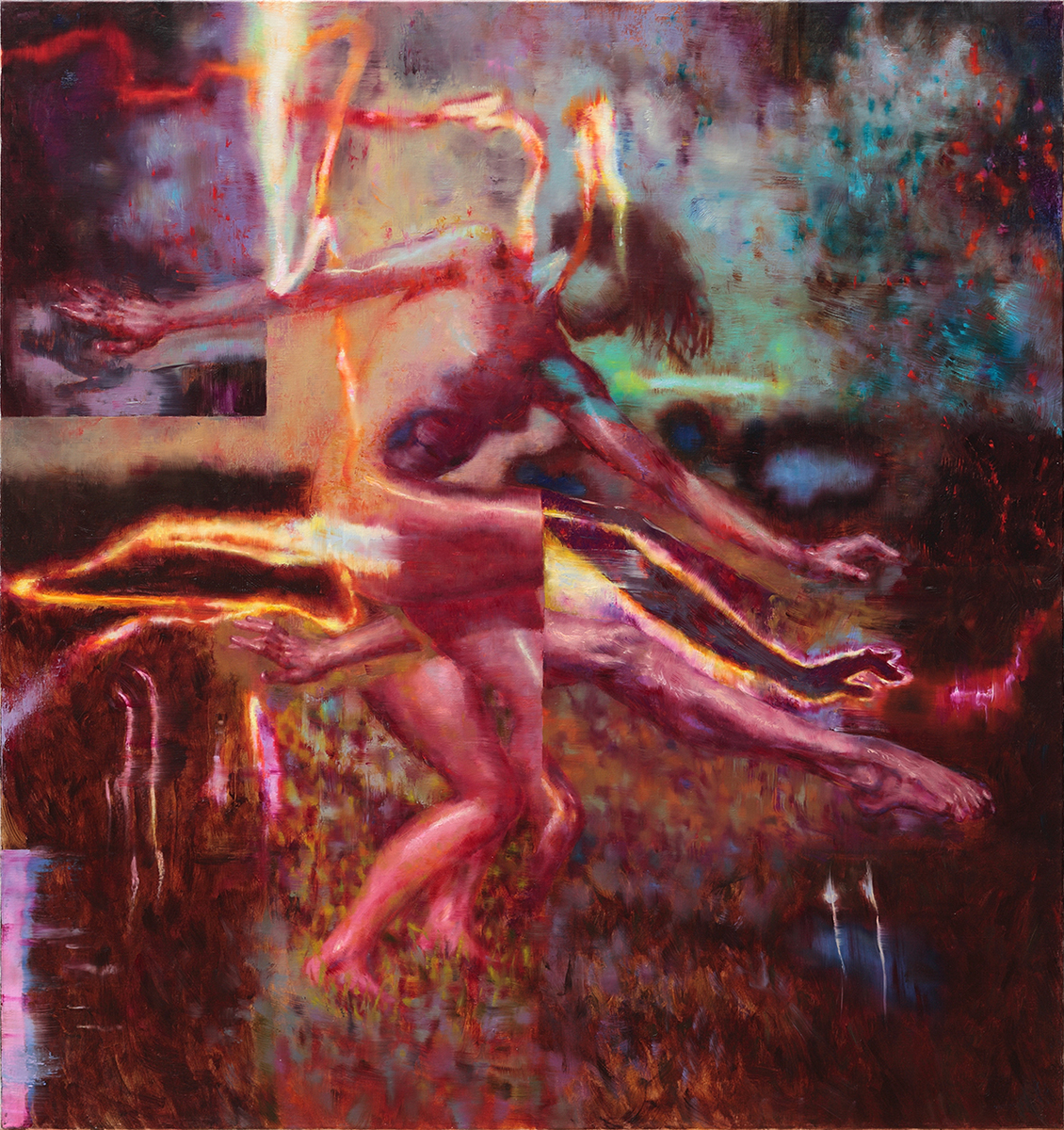
Valentina Murabito – La donna del mare
Valentina Murabito entführt bei 68projects by KORNFELD in eine faszinierende Welt, in der Mythologie, Natur und Fotografie auf außergewöhnliche Weise verschmelzen.
mehr erfahren...


Persons Projects is proud to present a selection of paintings and drawings from Paweł Książek’s latest series Movement dedicated to the development of experimental dance in the Weimar Republic. The starting point for Książek’s series are two preserved photographs of the Viennese dancer Susanne Birkmeyer taken by Trude (Gertrude) Fleischmann in the 1930s in Vienna. Because of her Jewish background, Fleischmann was forced to emigrate to Paris, London, and eventually, with the help of her former student and lover Helen Post, to New York after the Anschluss in 1938. With his series, Książek engages in a direct dialogue with these pioneering artists, some of whom have been forgotten, and thus revives their art.
Since the beginning of his career, Książek has been interested in the roots of modernism. The methodology which the artist uses is based on working with archives, encyclopedic and factual sources. He develops his path of investigation by using the analytical studies of avant-garde aesthetics. He researches the mutual relations between the human body and objects in space, nature, and culture through their construction and deconstruction. The result of Książek’s creative process has several layers. It begins with a series of text-image works on paper based on a very careful selection of photos and motifs. Książek’s texts are written onto the drawings in an encyclopaedia-like style, presenting stories that reveal the connections between the historical events as well as the biographies of the artists. These conceptual works are materials that will eventually develop into large-format oil paintings.
From the late 19th century, the Lebensreform movement developed in Germany, which was mainly instrumental in the rise of interest in nudism, hygiene, dance, and other activities associated with the idea of returning to nature. The human body was given a new meaning. It was now used as an instrument of freedom to move and unfold freely. It is necessary to consider the prevailing fashion of the time as well to understand the importance of, for example, the banishment of the corset worn by women and, in some cases, by men. Movement, as a motoric attribute, was an essential element in the development of the new dance forms which were taught at new and experimental dance schools created by visionaries such as Rudolf von Laban, Mary Wigman, and Janina Mieczyńska-Lewakowska in Warsaw. The communities that were formed around these centers had a multicultural character.
The so-called naked culture was a further development of the body’s liberating tendencies. Phrases like “Nature knows no clothes” and “The true man is the naked man” were propagated. This idea was reflected in the film as well as photography, which, as a new medium, was especially appreciated by young, mainly Jewish female artists: Yva, Trude Fleischmann, Frieda Riess, and Charlotte Rudolph successfully opened their studios in Vienna and Berlin. They directed their attention to the phenomenon of experimental dance and nudism, resulting in photographs depicting young dancers, not anonymously but known by their names. It led to a fresh interpretation of pictures of the female body, largely desexualized. The erotic female became less important and was replaced by the nature-loving, sporty, supple, androgynous type of woman.
At the same time, the notion of the body took on a different meaning: In the 1930s, it was now used as a vehicle for the National Socialist propaganda. The irony was that many of the used images were displaying Jewish dancers. The coming to power of the National Socialists in Germany and their brutal policies literally paralyzed the artistic activity of people of Jewish origin and led to their emigration. This exhibition is therefore dedicated to the famous pre-war dancers of Jewish descent, such as Susanne Birkmeyer or Ruth Sorel-Abramowitsch, who were deprived of the opportunity to practice their profession and forced to emigrate due to the rise of the National Socialists.
Paweł Książek’s paintings are centered around the idea of showing the impression of movement by using the fragmentary afterimage rather than linear overlapping of sequences. In other words, more like the images evoked under the eyelid of a light-stunned eye. Książek’s challenge is to recreate these dancers’ movements from performances that were frozen in time by only a few limited historical photographs. Meticulously painted, Książek compiles his research and information through a compilation of images that become a visual representation of the issues he’s raised and focused on. These paintings have the character of a landscape yet are supplemented with a series of afterimages that project the dynamics of a moving dancer’s body. As such, his work is full of quotes and allusions which blend the past with visions of the future.
Paweł Książek was born in 1973. He studied at the Academy of Fine Arts in Kraków and Hochschule für Gestaltung in Offenbach am Main. Lives and works in Kraków and Szczecin. Lecturer at the Academy of Art in Szczecin since 2014, associate professor since 2020. Książek was a resident at Künstlerhaus Bethanien in Berlin (2011) and SOArt in Austria (2013). Holder of the scholarship of the Ministry of Culture and National Heritage in 2008. His works have been presented at more than a dozen individual exhibitions at Salzburger Kunstverein, Salzburg (2009); Bunkier Sztuki Gallery of Contemporary Art, Kraków (2008); Art Stations Foundation, Poznań (2009); Polish Institute in Berlin (2012); Art Basel Statements in Basel (2009). Foksal Gallery, Warsaw (2020), among other venues, as well as dozens of group exhibitions at such institutions as the National Museum in Kraków; National Museum in Szczecin; MAXXI, Rome; Skulpturenmuseum Glaskasten, Marl; Arnold Schönberg Centre, Vienna; Sean Kelly Gallery, New York; MOCAK Museum of Contemporary Art, Kraków; Künstlerhaus Bethanien, Berlin.
Auch spannend für dich: